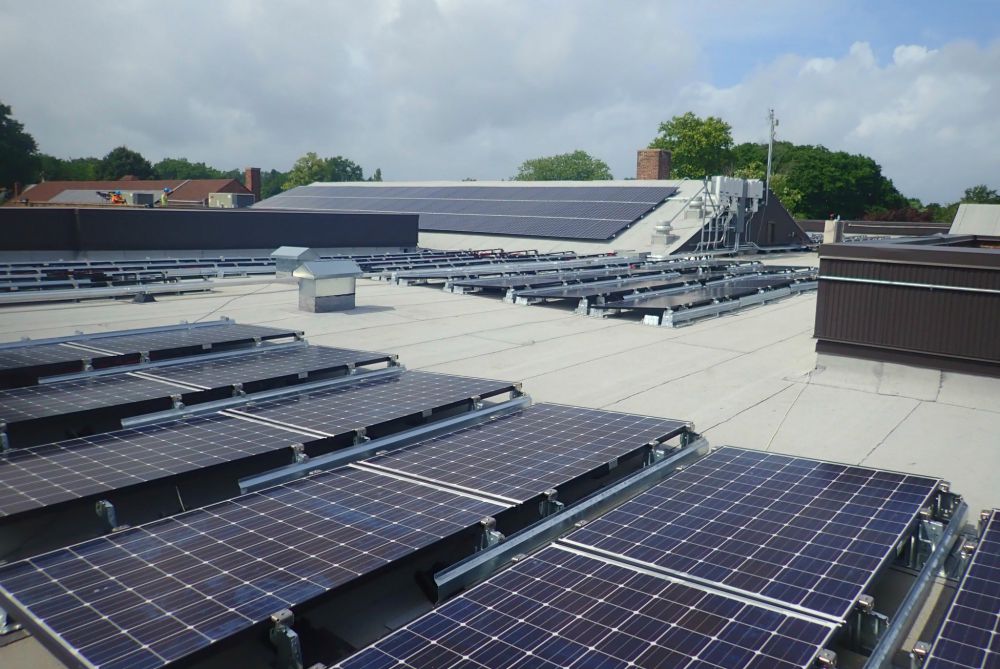
An array of solar panels were installed in October 2018 on the roof of Blessed Sacrament School in Staten Island, New York, as part of the New York Archdiocese's clean energy pilot project. (Courtesy Consolidated Edison, Inc.)
Every diocese has that one parish.
The one that seems to do everything, among the first to do everything, and have the resources — whether money, people or enthusiasm — to do everything.
That feeling is undoubtedly present in the Catholic Church's continuing work to instill creation care and a moral concern about the impacts of climate change more deeply into the Catholic experience. The challenges of expanding how many parishes and dioceses embrace the messages in Pope Francis' encyclical "Laudato Si', on Care for Our Common Home," are complex, with numerous dynamics at play. Last week, EarthBeat examined four of the factors driving the pace and scale of climate change in U.S. Catholic dioceses.
But that doesn't mean there haven't been signs of success in moving environmental stewardship beyond those early adopting Catholics, with numerous dioceses making strides. Here's a closer look at how four of them are doing it.
Atlanta
When people talk about examples of successful implementations of Laudato Si' at the diocesan level, they often point to Atlanta.
In December 2015, the Atlanta Archdiocese unveiled its Laudato Si' Action Plan, a 52-page document meant to turn the pope's words into work. Commissioned by then-Archbishop Wilton Gregory, now in Washington D.C., it was compiled by scientists at the University of Georgia.
In the time since, the action plan has been integrated into the science and religion curricula at all Catholic schools in the archdiocese. The archdiocese now holds an annual Green Mass. Many parishes have formed creation care teams to apply the action plan in their communities. Numerous dioceses have also borrowed portions of the action plan in their own sustainability efforts.

Auxiliary Bishop Bernard Shlesinger III speaks during the Atlanta Archdiocese's Green Mass on Oct. 4 the Shrine of the Immaculate Conception. (Atlanta Archdiocese/Jayna Hoffacker)
The chancery, already an EPA-certified Energy Star building for energy efficiency, is looking at what it would take to become LEED certified, a broader green sustainability designation. It has joined several parishes in ditching plastic foam cups and has explored coordinating bulk purchases so more can use more environmentally friendly materials. It also began water, waste and energy audits for every parish, to be followed by three-year sustainability plans. It hopes to have measurable results within a year.
"We are beginning to see a change," said Kat Doyle, director of justice and peace ministries for the Atlanta Archdiocese.
Still, she acknowledges a large part of the past four years has been spent on education and awareness around the Christian call to care for creation, as opposed to action that directly results in change.
As chancery officials charted an action plan strategy, they knew there'd be pockets of parishes that would immediately run with it. A larger contingent of the congregations, though, were either unaware or indifferent to the ideas around creation care outlined in Laudato Si'.
With those parishes in mind, they devised a three-part program: changing hearts, changing minds and changing behaviors.
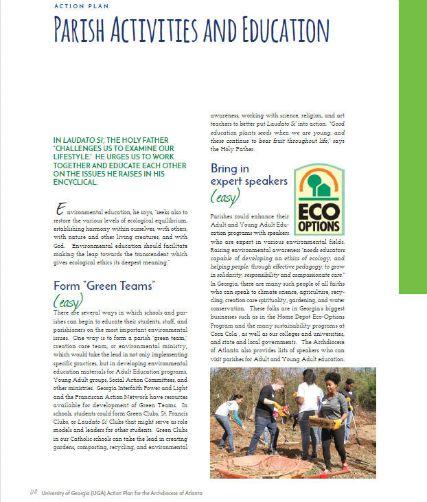
Screenshot of Page 2 from the Atlanta Archdiocese's Laudato Si' Action Plan.
"And in that order," Doyle quickly noted.
Right now, the archdiocese is in the changing minds stage, she said. It is assembling a creation care advisory committee of experts in energy, water, waste and sustainability issues specific to both urban and rural areas. The committee, along with a sustainability coordinator and a team of interns, will help the chancery better understand how to bring about changes in environmental stewardship and model them for parishes and other Catholic organizations to replicate.
The hope is that the combination of expertise at the chancery and enthusiasm in the parishes will spread the Laudato Si' Action Plan even further.
Doyle concedes there remains a sizeable group within the archdiocese that questions why the church is involved in environmental issues or why they should care about climate change.
In response, the chancery has worked to broaden the lenses on how people view the encyclical and nature itself — that as God's creation it has inherent value and thus requires protection. They have also connected environmental protection with Catholic values around the family (leaving children and grandchildren with a habitable world) and have tied issues like air pollution — something most people agree is bad — to safeguarding newborns and the young, among those most vulnerable to exposure.
New York City
For the past five years, Martin Susz has overseen an overhaul of how one of the nation's largest archdioceses uses, conserves and sources the energy that powers its 296 parishes, nearly 200 schools and many other buildings spread across 10 counties.
With the backing of Cardinal Timothy Dolan and top chancery officials, the New York Archdiocese hired Susz in November 2014 to form its first energy management department. The New York Archdiocese has set a goal of reducing its total energy costs, approximately $40 million annually, by 10%.
The small, three-person team has no operating budget, and can offer only recommendations as opposed to directives. But the department has been able to make substantial strides in energy use and efficiency at parishes and schools.
From 2014 through summer 2018, they conducted energy audits at 108 sites, counting 300-plus buildings. That information allowed them to identify what upgrades to explore with pastors and principals.
To date, they have helped 84 parishes install LED lighting upgrades. Numerous parishes have made other upgrades, whether replacing boilers and radiator steam traps or making insulation improvements through weather stripping doors, caulking windows, wrapping hot water pipes and other measures to prevent air inside escaping the "building envelope."
In January, five parishes and two high schools flipped the switch on solar installations as part of its solar pilot project. Solar is in the works at two more high schools, and plans are under way for solar arrays of 5 megawatts and 3.5 megawatts at two of its cemeteries.
"Our attitude here is walk before you run," Susz said. "So we start slowly, we get some wins under our belt, we figure out the best way to do it, and then we try to replicate it. And that's what we're doing right now."
State and utility energy programs have been critical for the New York Archdiocese. The energy audits were funded in large part by the New York State Energy Research and Development Authority. Incentives from Consolidated Edison picked up 60 cents on the dollar for LED upgrades, with similar programs offered by other area utilities. The energy management team has sought requests for proposals (RFPs) for other energy projects, including the solar pilot that they conducted with Con Edison Solutions.
Along with upgrades, the energy management department has helped several parishes get out of bad energy contracts. Susz said it's not uncommon for parishioners or unsolicited salesmen to approach priests promising a great way to reduce energy and costs, only to see bills balloon in several years. He said an advantage of an office like his is its expertise to vet contracts and companies to help parishes and schools get the best, most reliable, deals.
"[Our pastors] did not become a priest to be a property manager, to take care of buildings. That's not why they went to the seminary," he said.
Advertisement
Indianapolis
This summer, the Indianapolis Archdiocese completed the first phase of its first sustainability pilot program.
Four parishes in the city, along with Scecina Memorial High School, took part in the initial 10-week phase. It was one of the first major initiatives for the archdiocesan creation care commission, established in 2015 under Archbishop Joseph Tobin and since continued by Archbishop Charles Thompson.
In September, the archdiocese marked its first formal recognition of the Season of Creation. As part of its celebration, it planted more than 200 trees at 13 parishes across the archdiocese.
"It takes a while to gather steam and decide what we're going to do and how we're going to do that," said John Mundell, a member of the creation care commission and the president of the Mundell & Associates environmental consulting firm.
The commission has created a website complete with links to Catholic teaching on environmental stewardship, ecologically themed prayers and songs, and basics about climate change and sustainable practices. It has hosted speakers, including a scientist from the Purdue University Climate Change Research Center who described how climate change impacts the agriculture-reliant state.
The presentation served as a way not only to bring climate change to a local level but also break down misconceptions.
"When the people saw the scientists who are working on this are not really political people, they're just presenting what the predictions are, I think they begin to understand that this is something that's going to impact here, not just halfway across the world," Mundell said.
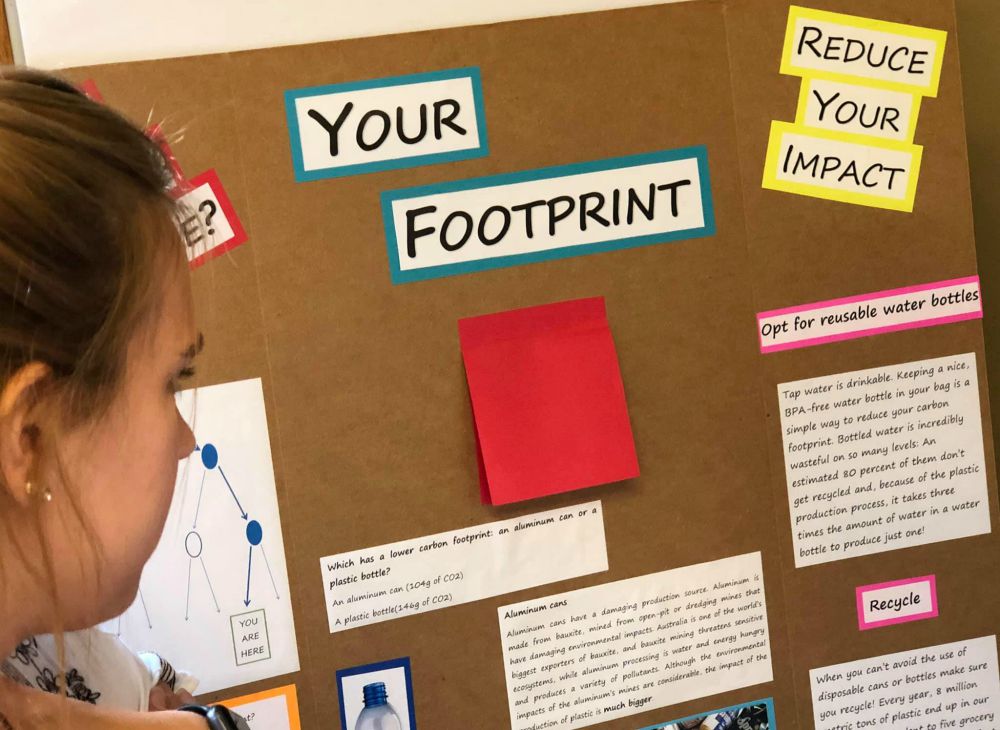
A poster displayed at the kickoff gathering for the Indianapolis Archdiocese's sustainability pilot program offers ideas on how individuals can reduce their carbon footprint and impact on the environment. (John Mundell)
The pilot program, which began in the spring, was an effort to expand work on creation care beyond offering resources. Each of the parishes and schools underwent an energy audit from the local utility, Indianapolis Power and Light. As part of that process, they received new LED lights and controls, valued at several thousand dollars, for free.
The auditing process also examined issues related to waste, water and sustainability as well as their own habits and the level of sustainability consciousness in their community.
At the end of the 10 weeks, the parishes and Scecina High were given a 12-month program to continue their sustainability work. The creation care commission will deliver a report on the pilot project's first phase to the archbishop later this month.
Commission members hope the pilot project proves to be enough of a positive experience that it can be scaled up to expand to other parishes, said Deacon Mike Braun, archdiocesan director of pastoral ministries. He said he's especially focused on rural areas where there can be greater hesitancy to try something new due to concerns over costs and resources.
"We can show the real benefits that a parish will reap with improving how they manage their energy and their environment that they have at the parish," Braun said of the pilot program. "They can reduce their costs for energy pretty substantially with some of the work."
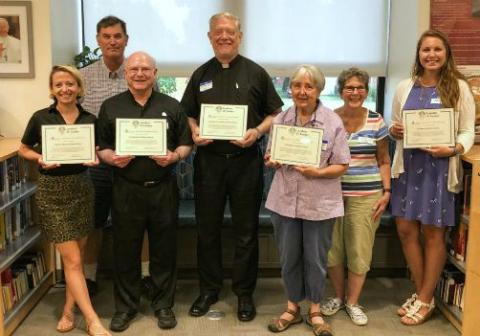
The Indianapolis Archdiocese recognized as "Laudato Si' leaders" representatives of four parishes and one high school that took part in its inaugural sustainability pilot project. (John Mundell)
Cost concerns also exist for the all-volunteer creation care commission, as well.
A mix of religious orders, parishes and area environmental groups, including Mundell's firm, provided funding to support both the pilot project and Season of Creation events, and fund several interns.
"We will have to look at how we can manage this going forward, as far as resources, as far as funds, as far as budget, and see what that involves," Braun said.
San Bernardino
At its annual Care for Creation Day, the Diocese of San Bernardino, California, honored 11 parishes that have converted to solar energy.
The ceremony, presenting each parish with an engraved crystal plaque, was part of a daylong event held at the Soboba Indian Reservation that drew around 125 people, many of them families, on the first Saturday in October. The day included a sacred walk among six stations signifying the six days of creation, as well as a speech by Bishop Gerald Barnes.
Rather than hold a traditional conference, the eight-person diocesan Laudato Si' Committee deliberately has sought out opportunities for an encounter with nature. The previous two Care for Creation Days were held at Big Bear Lake and included a hike and talk from a forest ranger. Schools used the weekday event as a field trip.
The awards were also a way to bring awareness to the visible steps being undertaken in the southern California diocese.
Shortly after the release of the encyclical, a Laudato Si' committee set up a website that included study guides, discussion guides, resources on ecological spirituality and a letter from the bishop. They have held numerous formation opportunities on the encyclical for priests, pastoral leaders and religious education directors.
The Office of Life, Dignity and Justice recently polled all 92 parishes on what they are doing in their parishes on creation care: Do they have a green team? Is there a ministry focused on environmental justice? Are they exploring solar? On the latter, at least another 20 parishes have expressed a desire to convert to solar energy. To that end, the diocesan Office of Construction and Real Estate has been directed to help shepherd parishes and schools through the process.
Late last month, the diocese finished constructing a 111-solar panel carport at its pastoral center that will produce 443 kilowatts of energy and slash its monthly energy bill an estimated 75%.
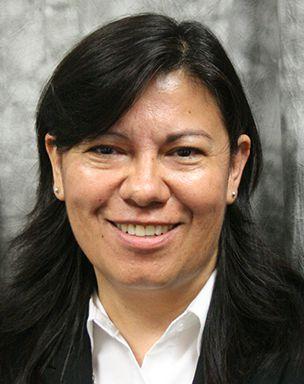
Guardian Angel Sr. Hortensia Del Villar, chairperson of the Laudato Si' Committee in the Diocese of San Bernardino, California. (Diocese of San Bernardino, California)
Such examples by the diocese can become a catalyst for wider, more ambitious adoption of faith-driven ecological efforts, said Guardian Angel Sr. Hortensia Del Villar, head of the diocesan Laudato Si' Committee.
It's a personal goal for Del Villar to see 90% of the diocese's parishes and schools convert to solar energy by 2030. She sees the church capable of bolder, more ambitious commitments to care for the Earth.
Whether within the Catholic Church or the wider world, she admits a degree of "holy frustration," albeit not paralyzing, with the pace of action on climate change to date.
"It's a frustration that allows me to see how slow we are going and how much faster we need to go, in terms of our commitment, especially when we hear that global emissions need to peak by 2020. I mean, 2020 is coming. It's here," she said.
Equipped with the California bishops' recent pastoral statement on the environment and the pope's encyclical, Del Villar feels Catholics have more than outlined where they stand on creation care. Now it's time to act upon their messages.
"In terms of the Catholic Church, it is very clear that we care for creation and that we have a commitment, in terms of our documents and in terms of our public stance," she told NCR. "But I think at this point we do need to take a further step in taking actions that are more bold and … really supporting what we say."
[Brian Roewe is an NCR staff writer. His email address is broewe@ncronline.org. Follow him on Twitter: @BrianRoewe.]







